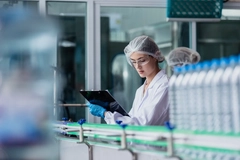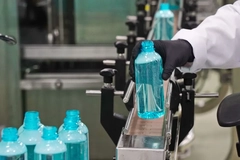Plasticosis problems: UK’s Natural History Museum discovers plastic-induced disease in seabirds

07 Mar 2023 --- Researchers from the Natural History Museum in London, UK, claim to have found evidence of a new plastic-induced fibrotic disease in seabirds named plasticosis. The scientists examined the relationship between levels of ingested plastic and the proventriculus organ – the first part of a bird’s stomach.
Flesh-footed shearwaters (Ardenna carneipes), described as “an apt species to examine these impacts in an environmentally relevant manner,” were observed on Australia’s Lord Howe Island. The findings were published in the Journal of Hazardous Materials.
“This study is the first time that stomach tissue has been investigated in this way and shows that plastic consumption can cause serious damage to these birds’ digestive system,” says Alex Bond, the museum’s curator in charge of birds.
Small pieces of plastic inflamed the digestive tract. Over time the persistent inflammation causes tissues to become scarred and deformed, with adverse side effects including worse digestion, growth and survival issues.
Seabirds suffer plastic scourge
The researchers say their motivation was driven by the increasing rate of plastic pollution being exposed to the environment, as it may have sub-lethal or “hidden” impacts.
This analysis marks the first record of plastic-related fibrosis in seabird stomach tissues. The disease can lead to the gradual breakdown of tubular glands in the proventriculus. Losing these glands can cause the birds to become more vulnerable to infection and parasites and affect their ability to digest food and absorb some vitamins.
The plastic also significantly altered their collagen prevalence within stomach tissue structures. Seabirds’ stomachs contained more scarring the more plastics they ingested (Image credit: Ed Dunens/ Flickr).
The scientists found extensive scar tissue formation in the birds associated with plastic exposure. Birds that ingested more plastic had more scarring. By examining different birds, the study found that proventriculus scarring was widespread.
“While these birds can look healthy on the outside, they’re not doing well on the inside,” continues Bond.
Comparing the plastics to other non-food materials the seabirds digest, researchers found that other inorganic items, such as pumice stones, do not contribute to such scarring.
It is hypothesized that chicks are being accidentally but directly fed the plastic pollution by parents bringing back food for them.
Currently, plasticosis is only known in one bird species. However, the scientists believe the scale of plastic pollution means that it may be much more widespread.
Plastic concerns grow
In related developments, Sri Lanka moved to ban single-use plastic following a series of wild elephant and deer deaths from plastic poisoning. Autopsies showed numerous animals had died after eating plastics mixed with food waste.
Additionally, researchers from the University of California Riverside, US, found that fathers exposed to plastic chemicals can affect their offspring’s metabolic health for two generations.
The researchers used mice as test subjects to find that paternal dicyclohexyl phthalate exposure for four weeks led to high insulin resistance, impaired insulin signaling in the first-generation offspring and the same but weaker effect in the second offspring.
Edited by Sabine Waldeck











